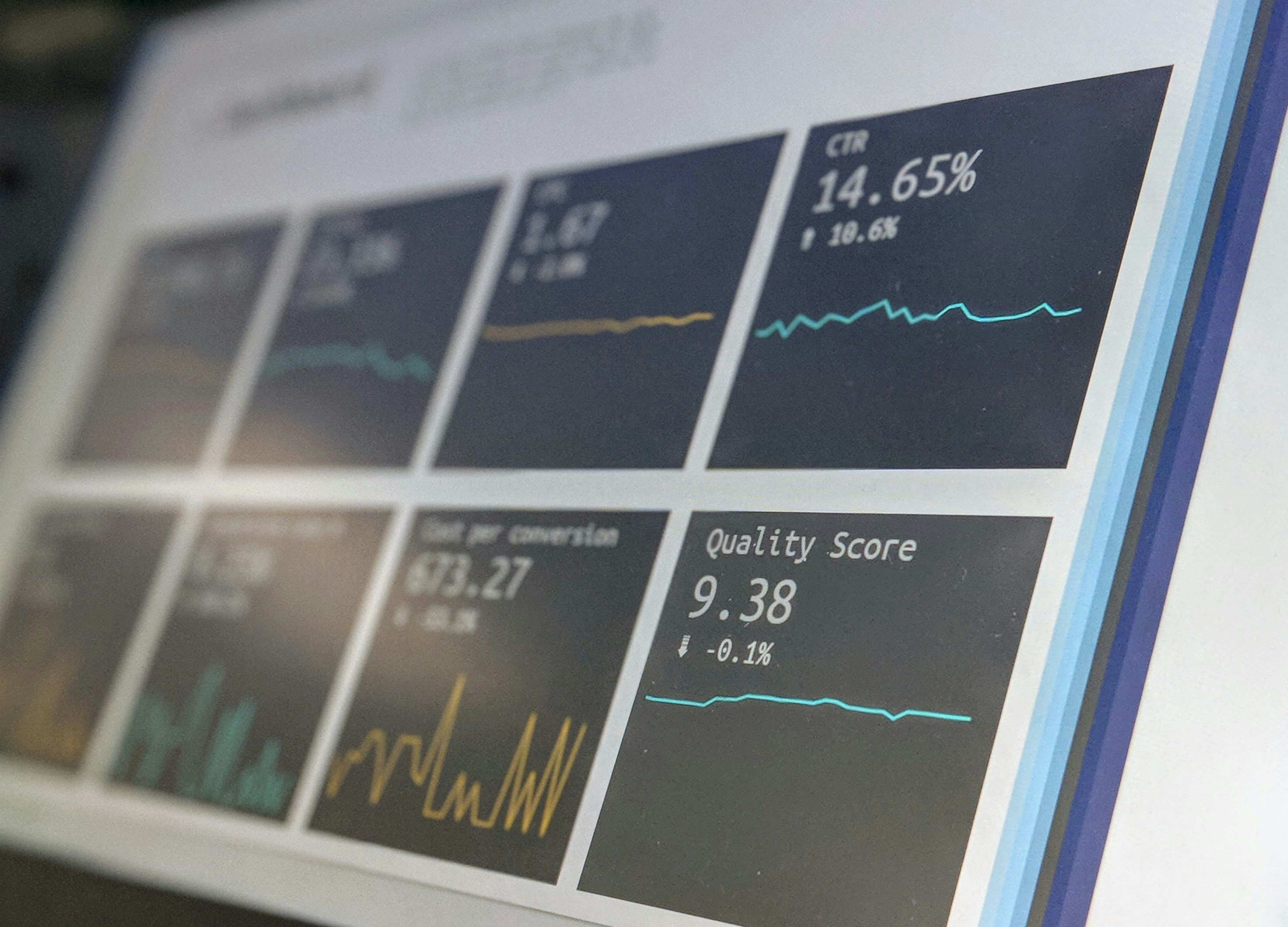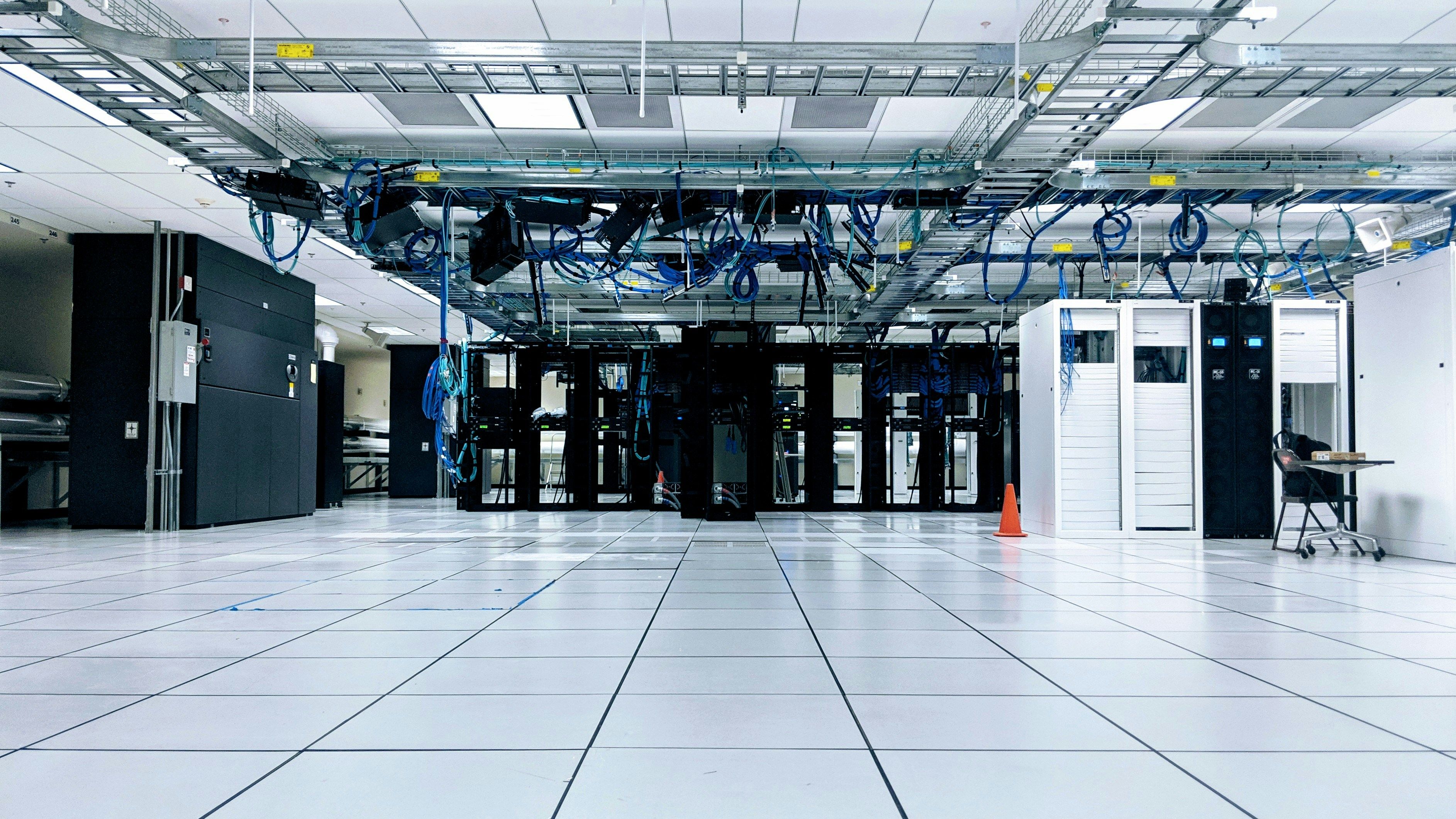A Multi-Tier Safety Architecture for Critical Applications

As artificial intelligence becomes widespread in sectors where failure can be catastrophic, systems need architectures that embed safety and compliance as foundational design principles rather than afterthoughts. Recent research shows that multi-tier architectures combining automated intelligence with human oversight offer the most promising path to controlling risks in complex, real-time environments [1].
This layered safety approach builds upon the compound AI architecture principles discussed in our previous research on enterprise AI stacks. While that work focused on optimizing performance through specialized agents and stream-based orchestration, this four-tier safety architecture extends these concepts specifically for critical applications where failure carries substantial human or financial consequences. The approach translates into a practical implementation through four specialized tiers, each designed to address different aspects of AI risk management and regulatory compliance. From initial data validation through final human authorization, these interconnected layers create multiple checkpoints that ensure safe, compliant operations throughout the AI decision-making process.
🔑 Key Takeaway
AI systems in critical domains require comprehensive safety architectures that integrate automated processing with human oversight, robust risk assessment, and continuous compliance monitoring to prevent failures that could result in substantial human or financial loss.
Four-Tier Architecture
The architecture organizes safety and compliance controls into four distinct layers, each with specialized functions that complement and reinforce the others. This structured approach ensures that critical AI decisions pass through multiple validation stages, with each tier acting as both a processing layer and a checkpoint. The design allows for graceful degradation when issues arise, meaning that if one tier encounters problems, the others can maintain system integrity while isolating and addressing the concern.

Tier 1: Edge Processing & Validation
The first line of defense where raw data from medical devices, financial systems, or IoT sensors undergoes initial sanitization and risk assessment using lightweight models like Qwen2.5-1.5B.
Tier 2: Intelligence Processing
Advanced AI models with 70+ billion parameters, including domain experts like Med-PaLM, process validated data to generate actionable insights with confidence scoring.
Tier 3: Human Oversight
Domain experts, compliance officers, and risk managers review AI decisions through structured escalation protocols before final authorization.
Tier 4: Compliance Monitoring
Continuous regulatory compliance, blockchain-based audit trails, and incident response ensure adherence to HIPAA, GDPR, and emerging standards.
Why This Layered Approach Works
The effectiveness of this multi-tier architecture stems from fundamental principles of defensive design that have proven successful across multiple engineering disciplines. Like the redundant safety systems in nuclear power plants or the multiple backup systems in commercial aircraft, each tier operates independently while contributing to the overall safety posture of the system.
The key insight is that AI safety failures rarely result from a single point of failure. Instead, they emerge from cascading issues that compound across multiple system components. A medical diagnosis AI, for example, might receive corrupted sensor data, apply inappropriate model weights due to distribution drift, and lack proper human oversight. All of these issues can occur simultaneously. Traditional monolithic AI systems struggle with such multi-factor failures because they concentrate decision-making in a single processing layer.
This layered architecture addresses these vulnerabilities through strategic separation of concerns. Each tier focuses on specific types of risks while maintaining awareness of the broader system context. The edge processing layer specializes in data integrity and input validation, while the intelligence processing layer focuses on inference quality and confidence assessment. Human oversight addresses contextual judgment and ethical considerations, while compliance monitoring ensures regulatory adherence and audit trail integrity.
Perhaps most importantly, this design enables graceful degradation under stress. When one component encounters issues, the system doesn't fail catastrophically. Instead, it can fall back to more conservative operating modes, escalate decisions to human reviewers, or temporarily halt operations while maintaining full visibility into the failure state. This controlled response to failure conditions is essential for maintaining trust in critical applications where the cost of unexpected system behavior can be measured in lives or billions of dollars.
Each tier serves as both a functional layer and a safety net. If one tier fails or detects an anomaly, the others can compensate. This redundancy is critical for risk mitigation and overall system robustness [2].
Edge Processing
A security checkpoint at an airport illustrates how Tier 1 functions. This layer screens all incoming data before it enters the system, using statistical outlier detection and domain-specific rules to spot potentially hazardous conditions. When something suspicious is detected, circuit breakers automatically halt further processing [3].

The edge processing layer operates as the first line of defense, implementing multiple validation strategies simultaneously. Data integrity checks verify that incoming information hasn't been corrupted during transmission, while format validation ensures compatibility with downstream processing systems. Beyond basic validation, the layer performs sophisticated pattern analysis using lightweight machine learning models specifically trained to identify anomalous data signatures.
The layer also implements temporal analysis, tracking how data patterns evolve over time. Gradual drift in sensor readings might indicate equipment degradation, while sudden spikes could suggest cyberattacks or equipment failure. This time-series analysis enables proactive intervention before problems cascade to critical levels.
⚠️ Critical Safety Feature
Circuit breakers at the edge can prevent cascading failures by immediately stopping processing when anomalies are detected, similar to electrical circuit breakers protecting homes from power surges.
The implementation uses configurable threshold matrices that adapt to different operational contexts. The most critical system settings might have more aggressive circuit breaker sensitivity than routine monitoring scenarios, recognizing that false positives are preferable to missed critical events. These thresholds can be dynamically adjusted based on risk profiles, time of day, or other external factors.
What makes this approach particularly powerful is its ability to fail safely while preserving system visibility. When a circuit breaker triggers, the system doesn't simply shut down and leave operators blind. Instead, it maintains diagnostic telemetry, logs the failure state comprehensively, and can often continue operating in a degraded but safe mode. A financial trading AI might halt automated transactions while continuing to provide market analysis and alerting human traders to unusual conditions that triggered the safety response.
Intelligence Processing
Tier 2 houses the heavy computational power. Large transformer models (deep learning systems with billions of interconnected processing units that can understand patterns in language and data) work alongside specialized knowledge bases organized through retrieval-augmented generation (RAG) systems. RAG combines the AI's learned knowledge with specific databases to provide more accurate, up-to-date information. Every inference includes confidence scoring, helping the system flag uncertain predictions for human review [4].

This tier represents the analytical brain of the system, where validated data from Tier 1 undergoes sophisticated processing through multiple specialized AI models working in concert. The architecture employs ensemble methods, running the same data through several different models and comparing their outputs. When models disagree significantly, this disagreement itself becomes valuable information, indicating areas of uncertainty that require additional scrutiny.
The RAG systems in this tier maintain dynamic knowledge bases that are continuously updated with the latest research, regulatory changes, and domain-specific expertise. In a medical application, this might include the latest clinical trial results, FDA drug approvals, and emerging treatment protocols. The system doesn't just retrieve relevant information, it evaluates the credibility and recency of sources. Weighting newer peer-reviewed research more heavily than older or less authoritative sources.
Confidence scoring operates at multiple levels within this tier. Individual model components generate local confidence scores based on their internal certainty measures, while meta-confidence algorithms analyze the consistency between different models' outputs. The system also tracks historical performance, adjusting confidence scores based on how well previous predictions matched actual outcomes. A diagnostic AI that has been consistently accurate for cardiovascular cases but less reliable for rare genetic conditions will reflect this differential performance in its confidence assessments.
The intelligence processing layer also implements sophisticated bias detection and mitigation strategies. It continuously monitors for demographic disparities in predictions, geographic biases, or temporal drift that might indicate the models are becoming less reliable over time. When bias patterns are detected, the system can automatically trigger model retraining, adjust prediction weights, or escalate decisions to human reviewers.
Human-in-the-Loop

No matter how sophisticated the AI, human oversight remains essential. Tier 3 implements a structured hierarchy where domain experts verify model outputs, while complex cases escalate to compliance officers and risk managers. This ensures clear accountability chains and prevents unchecked automated decisions [5].
The human oversight layer operates through carefully designed interfaces that present AI recommendations alongside the supporting evidence and reasoning chains. Rather than simply showing final outputs, the system provides transparency into how conclusions were reached, what data was considered, and where uncertainties exist. This approach enables human reviewers to make informed decisions about whether to accept, modify, or reject AI recommendations.
The escalation protocols within this tier are sophisticated and context-aware. Routine decisions with high confidence scores and low risk profiles might require only brief review by domain specialists. However, edge cases, decisions affecting vulnerable populations, or scenarios with significant financial or safety implications automatically escalate to senior experts or multi-person review committees. The system tracks reviewer expertise and assigns cases accordingly. For example, a pediatric cardiologist reviews children's cardiac assessments, while a financial compliance officer handles complex trading decisions.
The human oversight tier also implements cognitive bias mitigation strategies. Reviewers are presented with information in randomized orders to prevent anchoring effects, and the system tracks reviewer patterns to identify potential fatigue or bias trends. For example, when reviewing diagnostic recommendations, human experts might see patient symptoms before AI suggestions, preventing over-reliance on automated assessments.
This tier maintains detailed interaction logs that capture not just final human decisions, but the reasoning process, time spent on each case, and any modifications made to AI recommendations. This data feeds back into the system to improve both AI models and human review processes. If human reviewers consistently override AI recommendations in specific scenarios, this signals areas where the models need improvement or where additional training data is required.
The tier also includes collaborative decision-making tools for complex cases requiring multiple expert perspectives. Secure communication channels, shared annotation systems, and consensus-building workflows enable distributed teams to collaborate effectively while maintaining audit trails of the decision-making process.
Comprehensive Audit Trails
One of the architecture's key components is comprehensive audit trail systems that ensure complete accountability throughout the AI decision-making process. Like a tamper-proof flight recorder, these systems provide verifiable traceability from data entry to final decision, with various implementation approaches available to meet different security and regulatory requirements [6].
Traditional audit approaches have limitations in terms of data integrity and accessibility. Advanced audit trail systems can address these challenges through multiple methods, including blockchain-based implementations. Blockchain works like a digital ledger that multiple parties maintain simultaneously. Each entry is mathematically linked to previous entries, making it virtually impossible to alter past records without detection. This creates an unbreakable chain of accountability.
| Audit Component | Traditional Logging | Advanced Audit Trails |
|---|---|---|
| Data Integrity | Vulnerable to tampering | Cryptographically secured |
| Regulatory Access | Manual export required | Real-time access |
| Incident Investigation | Limited traceability | Complete decision history |
The audit trail system can utilize various architectures depending on organizational needs. One approach is a multi-chain blockchain architecture where sensitive logs are segregated based on regulatory requirements. Like having separate filing cabinets for different types of confidential documents, this enhances both performance and security by ensuring sensitive audit data is compartmentalized and accessible only to authorized stakeholders [7].
Regulatory Compliance by Design
The architecture integrates comprehensive measures for regulatory compliance from the ground up. Privacy-by-design principles, rigorous data access controls, and dedicated compliance monitoring ensure adherence to HIPAA (healthcare privacy rules), GDPR (European data protection regulations), and sector-specific guidelines [8].
The compliance monitoring layer provides automated incident response modules that can trigger predefined countermeasures. Emergency shutdown, automatic notifications to regulatory authorities, and forensic data extraction for post-incident analyses. This automated response system acts like a hospital's code blue team. It immediately mobilizes when critical situations arise.
The compliance monitoring layer operates as a sophisticated regulatory engine that continuously evaluates system activities against an extensive matrix of legal and regulatory requirements. This layer maintains real-time awareness of regulatory changes across multiple jurisdictions, automatically updating compliance rules as new legislation takes effect. For instance, when the European Union introduces new AI regulations or when healthcare authorities update patient privacy requirements, the system automatically incorporates these changes into its compliance evaluation framework.
Advanced pattern recognition algorithms within this layer detect potential compliance violations before they occur. The system analyzes data access patterns, processing workflows, and decision outputs to identify activities that might violate regulatory constraints. If a financial AI system begins accessing customer data outside approved parameters, or if a healthcare AI starts making decisions that could violate patient consent boundaries, the compliance layer immediately flags these activities and can automatically implement corrective measures.
The layer implements sophisticated role-based access controls that extend beyond simple user permissions. It maintains detailed profiles of every system user, tracking their compliance training status, certification renewals, and historical compliance performance. When regulatory violations occur, the system can instantly identify all personnel involved, their qualification levels, and any potential conflicts of interest that might have influenced the incident.
Regulatory reporting automation represents one of the layer's most valuable capabilities. Rather than requiring manual compilation of compliance reports, the system continuously generates regulatory documentation in real-time. These reports automatically adjust their format and content based on the specific requirements of different regulatory bodies. A single incident might trigger separate reports for healthcare privacy authorities, financial regulators, and data protection agencies, each tailored to their specific information requirements and submission formats.
The compliance layer also maintains predictive compliance modeling that forecasts potential regulatory risks based on current system trends. By analyzing historical violation patterns, regulatory enforcement trends, and system performance data, it can alert organizations to emerging compliance risks before they result in actual violations. This proactive approach enables organizations to address compliance gaps during routine maintenance rather than emergency response scenarios.
Risk Management: Proactive, Not Reactive
Traditional approaches often wait for problems to occur. This architecture embeds risk assessment at every tier, using techniques like Failure Mode and Effects Analysis (FMEA) to detect potential hazards both before they happen and as they develop. FMEA systematically examines what could go wrong at each step, much like how pilots use pre-flight checklists to prevent problems before takeoff [9].
"Humans on the other hand are better equipped to deal with unforeseen circumstances and define safer policies."
The proactive risk management framework operates through continuous monitoring and predictive analysis across all system tiers. Unlike traditional reactive approaches that respond to incidents after they occur, this architecture employs machine learning algorithms to identify risk patterns before they manifest as actual failures. The system maintains risk heat maps that visualize potential failure points in real-time, enabling operators to address vulnerabilities before they compromise system integrity.
Risk assessment integration occurs at multiple time scales within the architecture. Microsecond-level monitoring detects immediate threats like data corruption or sensor failures, while longer-term trend analysis identifies gradual degradation patterns that might indicate systemic issues. Monthly risk assessments evaluate model performance drift, regulatory compliance gaps, and emerging threat vectors that could impact future operations.
The FMEA implementation goes beyond static analysis to include dynamic risk modeling that adapts to changing operational conditions. In a hospital setting, the system might increase its risk sensitivity during flu season when patient volumes surge, or adjust risk thresholds during staff transitions when human oversight capacity is reduced. This contextual awareness ensures that risk management strategies remain relevant and effective across diverse operational scenarios.
Perhaps most importantly, the architecture implements a learning risk management system that improves its predictive capabilities over time. Each near-miss incident, successful intervention, and actual failure provides data that refines the risk models. This creates a continuously improving safety posture where the system becomes more effective at preventing problems as it gains operational experience.
Implementation Challenges and Solutions
Deploying this architecture isn't without challenges. System interoperability across different data sources, managing latency from multiple processing layers, and preserving privacy while maintaining auditability all require careful planning [11].
The complexity of implementing a multi-tier safety architecture introduces several technical and organizational challenges that must be addressed systematically. Legacy system integration often presents the most immediate hurdle, as existing healthcare, financial, or industrial systems weren't designed with modern AI safety architectures in mind. These systems may use proprietary data formats, operate on different communication protocols, or have limited computational capacity for additional safety processing.
Data synchronization across tiers becomes increasingly complex as the system scales. Each tier operates at different processing speeds and may need to maintain consistency across distributed databases while handling thousands of concurrent transactions. The challenge intensifies when dealing with real-time systems where even microsecond delays can impact safety outcomes. For instance, a cardiac monitoring system must ensure that data flowing from edge sensors through AI analysis to human review maintains temporal coherence without introducing artificial delays that could mask critical conditions.
Privacy preservation while maintaining comprehensive audit trails creates a fundamental tension in the architecture. Regulatory requirements often demand detailed logging of all system activities, yet privacy laws like GDPR require data minimization and user consent for processing. This challenge is particularly acute in healthcare applications where patient data must be both highly protected and readily available for legitimate medical and audit purposes.
Organizational resistance to multi-layered oversight can significantly impact adoption. Healthcare professionals, financial analysts, and other domain experts may initially view AI oversight as questioning their expertise or slowing their workflows. Successfully implementing human-in-the-loop systems requires careful change management, comprehensive training programs, and clear demonstration of how the architecture enhances rather than replaces human judgment.
The computational overhead of running multiple AI models, continuous monitoring systems, and comprehensive audit trails can strain infrastructure resources and increase operational costs. Organizations must balance safety requirements with performance needs and budget constraints, often requiring creative solutions for resource allocation and system optimization.
Key solutions include the following.
Modular Design Components can be updated independently without complete system overhauls, ensuring adaptability to emerging regulations and threats. This modular approach resembles building with standardized components. Each piece can be replaced or upgraded without rebuilding the entire structure [12].
Edge Computing Integration Processing data closer to its source reduces latency and enhances privacy while maintaining security through encrypted communication channels. Instead of sending all data to a central location, edge computing processes information locally, like having mini-data centers distributed throughout the system.
Adaptive Resource Allocation Dynamic scaling ensures the system maintains performance while meeting compliance monitoring requirements. The system can automatically adjust its computing resources based on demand, similar to how modern traffic systems adjust signal timing based on traffic flow.
Future Directions of Safe AI
This multi-tier architecture represents more than a technical solution. It's a framework for responsible AI deployment. By combining automated intelligence with structured human oversight and immutable audit trails, systems become both powerful and trustworthy.
Future research will focus on multi-agent orchestration (coordinating multiple AI systems working together), predictive circuit-breaker mechanisms, and enhanced blockchain optimization for real-time systems [3]. The goal is creating AI that doesn't just perform well, but performs safely and ethically in the most critical applications.
The path forward requires collaboration between technologists, ethicists, and regulators. Only by working together can these systems serve humanity's best interests while maintaining the accountability and transparency that complex world demands.
References
- E Blessing, "Regulatory Compliance and Ethical Considerations: Compliance challenges and opportunities with the integration of Big Data and AI," HAL Science, 2024, [Online]
- Simona Ramos, Joshua Ellul, "Blockchain for Artificial Intelligence (AI): enhancing compliance with the EU AI Act through distributed ledger technology. A cybersecurity perspective," International Cybersecurity Law Review, 2024, [Online]
- Ahmad Mohsin, Helge Janicke, Ahmed Ibrahim, Iqbal H. Sarker, S. Çamtepe, "A Unified Framework for Human AI Collaboration in Security Operations Centers with Trusted Autonomy," ArXiv, 2025, [Online]
- Ben Shneiderman, "Bridging the Gap Between Ethics and Practice," ACM Transactions on Interactive Intelligent Systems (TiiS), 2020, [Online]
- Gregory Falco, Ben Shneiderman, Julia Badger, Ryan Carrier, Anton Dahbura, David Danks, Martin Eling, Alwyn Goodloe, Jerry Gupta, Christopher Hart, Marina Jirotka, Henric Johnson, Cara LaPointe, Ashley J. Llorens, Alan K. Mackworth, Carsten Maple, Sigurður Emil Pálsson, Frank Pasquale, Alan Winfield, Zee Kin Yeong, "Governing AI safety through independent audits," Nature Machine Intelligence, 2021, [Online]
- Aidan Homewood, Sophie Williams, Noemi Dreksler, John Lidiard, Malcolm Murray, Lennart Heim, Marta Ziosi, Se'an 'O h'Eigeartaigh, Michael Chen, Kevin Wei, Christoph Winter, M. Brundage, Ben Garfinkel, Jonas Schuett, "Third-party compliance reviews for frontier AI safety frameworks," ArXiv, 2025, [Online]
- Inioluwa Deborah Raji, Andrew Smart, Rebecca N. White, Margaret Mitchell, Timnit Gebru, Ben Hutchinson, Jamila Smith-Loud, Daniel Theron, Parker Barnes, "Closing the AI accountability gap," Proceedings of the 2020 Conference on Fairness, Accountability, and Transparency, 2020, [Online]
- Harish Padmanaban, "Privacy-Preserving Architectures for AI/ML Applications: Methods, Balances, and Illustrations," Journal of Artificial Intelligence General science (JAIGS), vol. 3, no. 1, 2024, [Online]
- Y. Kim, H. Jeong, Chanwoo Park, Eugene Park, Haipeng Zhang, Xin Liu, Hyeonhoon Lee, D. McDuff, Marzyeh Ghassemi, Cynthia Breazeal, S. Tulebaev, Hae Won Park, "Tiered Agentic Oversight: A Hierarchical Multi-Agent System for AI Safety in Healthcare," ArXiv, 2025, [Online]
- Prajit T. Rajendran, Huascar Espinoza, Agnes Delaborde, Chokri Mraidha, "Human-in-the-Loop Learning Methods Toward Safe DL-Based Autonomous Systems: A Review," Lecture Notes in Computer Science, 2021, [Online]
- Adedoyin A. Hussain, Fadi Al‐Turjman, "Artificial intelligence and blockchain: A review," Transactions on Emerging Telecommunications Technologies, 2021, [Online]
- Yasodhara Varma, "Governance-Driven ML Infrastructure: Ensuring Compliance in AI Model Training," International Journal of Emerging Research in Engineering and Technology, 2020, [Online]
The Path to Practical Confidential Computing for AI Systems
Discover how the convergence of trusted execution environments, homomorphic encryption, and federated learning is creating production-ready systems that protect AI models and sensitive data with minimal performance overhead.
Spiking Neural Networks for Energy-Efficient AI
AI approach that achieves efficiency and speed by mimicking biological neural networks
Discuss This with Our AI Experts
Have questions about implementing these insights? Schedule a consultation to explore how this applies to your business.